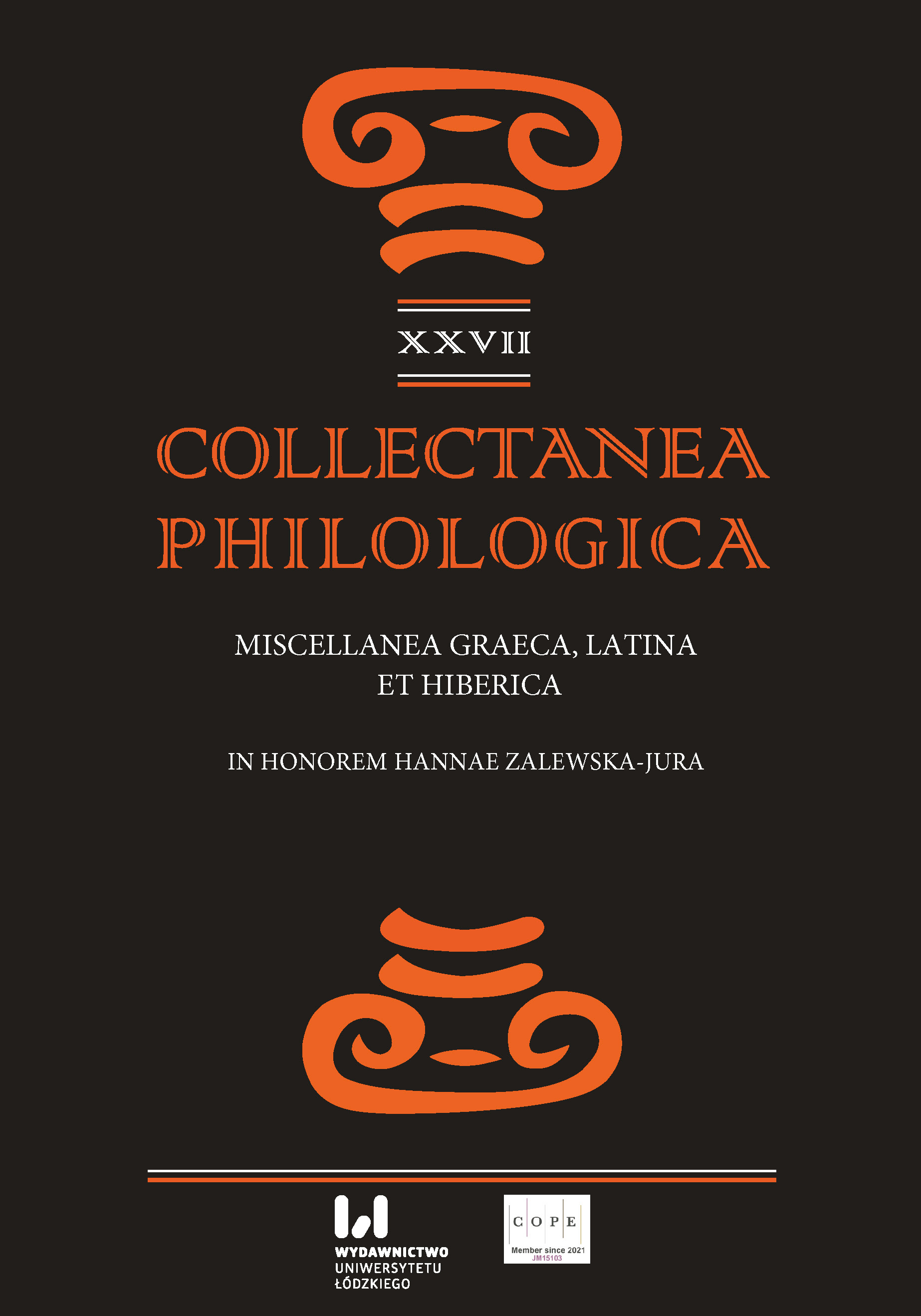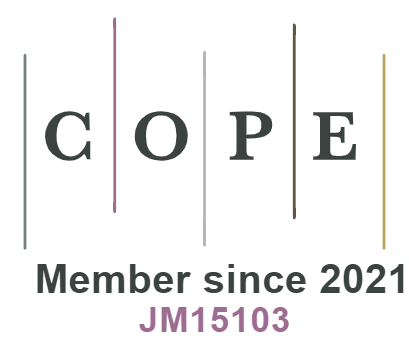Przedświt: fascynacja architekturą mykeńskiej i archaicznej Grecji w Niemczech schyłku XIX i początków XX wieku
DOI:
https://doi.org/10.18778/1733-0319.27.09Słowa kluczowe:
historia sztuki, modernizm, sztuka antyczna, architektura mykeńska, neoklasycyzm, antykizacja, mur cyklopowy, ThingstätteAbstrakt
At the beginning of the 20th century, German architecture saw a turn towards the art of antiquity, which was partly a reaction to the profusion of decoration in late historicism and Art Nouveau. However, the so-called Reformarchitektur was interested not only in classical antiquity (and the art of classicism and neoclassicism), but also in earlier periods, especially Mycenaean art. This was, of course, related to the discoveries in Troy, Mycenae and Tiryns, but the social and political context of the time was equally important. One of the foundations on which the national identity of the Germans in the 19th century was based was the myth of the ancient Germans, who were supposed to be characterized by courage, sincerity and natural morality. According to the creators of this idea (F. Avenarius, J. Langnehn, A. Haupt, G. Kossinna et al.), the Germans, next to the Greeks, were one of the original peoples of Europe (Urvolk), sharing ideas and artistic forms. In the north of the continent, they were allegedly preserved longer than in the Mediterranean area because the Nordic nations did not take part in the development of mimetic art. Consequently, it was believed that in the architecture of the Mycenaean period, as well as in buildings from the Homeric and archaic periods (as well as in Etruscan and ancient Roman buildings), we could find forms typical of the unpreserved Nordic architecture, destroyed in the process of Christianization. Therefore, Mycenaean and archaic architecture became the subject of interpretation in the spirit of nationalism, perceived, however, in a broader sense than just the framework of one nation. This was related to the category of “Nordic nations” as well as an even broader vision of the “primordial peoples of Europe”. These views and research became one of the inspirations for the architecture created at that time with reformatory, modernizing ambitions.
Bibliografia
Antonaccio, C.M. (1995). An Archaeology of Ancestors. Tomb Cult and Hero Cult in Early Greece. Lanham: Rowman.
Google Scholar
Arndt, M. (1978). Das Kyffhäusr-Denkmal. In: Wallraff-Richards Jahrbuch 40. 75–127.
Google Scholar
Behn, F. (1927). Altgermanische Kunst. München: Lehmann.
Google Scholar
Behrens, P. (1909). Was ist monumentale Kunst? Kunstgewerbeblatt, Neue Folge 20(4). 46–48.
Google Scholar
Berding, H. (1990). Staatliche Identität nationale Integration und politischer Regionalismus. In: H. Berding (ed.). Aufklären durch Geschichte. Göttingen: Metzler. 248–304.
Google Scholar
Blauert, E., Wippermann, K. (ed.). (2007). Neue Baukunst. Berlin um 1800. Berlin: Nicolai.
Google Scholar
Buddensieg, T. (1984). Die kaiserliche deutsche Botschaft in Petersburg von Peter Behrens. In: M. Warnke (ed.). Politische Architektur in Europa von Mittealter bis heute. Köln: DuMont. 374–384.
Google Scholar
Callies, H. (1975). Arminius – Held der Deutschen. In: G. Engelbert (ed.). Ein Jahrhundert Herrmannsdenkmal 1875–1975. Detmold: Naturwissenschfatlicher und Historischer Verein für das Land Lippe. 33–42.
Google Scholar
Eich, A., Weidhaas-Berghöfer M. (eds.) (2021). Eine Odyssee: Studien zum Leben und Werk Wilhelm Dörpfelds. Beiträge zur Geschichte und Heimatkunde des Wuppertals, Band 61. Wuppertal: Polyphem.
Google Scholar
Haupt, A. (1913). Die älteste Kunst, insbesondere die Baukunst der Germanen: von der Völkerwanderung bis zu Karl dem Grossen. Leipzig: Degener.
Google Scholar
Hofer, S. (2005). Reformarchitektur 1900–1918. Deutsche Baukünstler auf der Suche nach dem nationalen Stil. Stuttgart–London: Menges.
Google Scholar
Hemstad, R., Møller, J.F., Thorkildsen R. (eds.). (2018). Skandinavismen: Vision og virkning, University of Southern Denmark studies in history and social sciences, vol. 556, Syddansk. Odense: Universitetsforlag.
Google Scholar
Hutter, P. (1990). „Die feinste Barbarei“. Das Völkerschlschtdenkmal bei Leipzig. Eine Studie über die „germanische“ Kunst des 19. Jahrhunderts. Mainz: Philipp von Zabern.
Google Scholar
Hüter, K.H. (1988). Architektur in Berlin 1900–1933. Stuttgart: Kohlhammer.
Google Scholar
Johnston, O. (1990): Der Deutsche Nationalmythos. Ursprung eines politischen Programms. Stuttgart: Metzler.
Google Scholar
DOI: https://doi.org/10.1007/978-3-476-03304-8
Kossinna, G. (1911). Anmerkungen zum heutigen Stadt der Vorgeschichtsforschung. Mannus 3. 127–130.
Google Scholar
Krauskopf, K. (2001). Monument und Landschaft. Das Bismarckdenkmal am Starnberger See als Wendepunkt in der Denkmalarchitektur um 1900. Hamburg: Hamburg, Hochschule für Bildende Künste.
Google Scholar
Latacz, J., Greub, T., Blome, P., Wieczorek A. (eds.). (2008). Homer. Der Mythos von Troia in Dichtung und Kunst. München: Hirmer.
Google Scholar
Mai, E. (1994). Denkmäler im Kaiserreich. In: W. Nerdinger, E. Mai (eds.). Wilhelm Kries. Der Architekt zwischen Kaiserreich und Demokratie, 1873–1955. München–Berlin: Klinkhardt und Biermann. 28–43.
Google Scholar
Mai, E. (2013). Nationaldenkmal – eine Verlaufgeschichte. In: E. Mai, P. Springer (eds.). Das letzte Nationaldenkmal. Bismarck am Rhein: ein Monument, das nie gebaut wurde. Köln–Weimar–Wien: Böhlau. 165–179.
Google Scholar
DOI: https://doi.org/10.7788/boehlau.9783412217051.165
Makała, R. (2015). Nowoczesna praarchitektura. Architektoniczne pomniki narodowe w wilhelmińskich Niemczech (1888–1918). Szczecin: MNS.
Google Scholar
Mebes, P. (1908a). Um 1800. Architektur und Handwerk im letzten Jahrhundert ihrer traditionellen Entwicklung. Band 1: Straßenbilder, öffentliche Gebäude und Wohnhäuser, Kirchen und Kapellen, Freitreppen, Haustüren, eiserne Gitter, Denkmäler. München: Bruckman.
Google Scholar
Mebes, P. (1908b). Um 1800. Architektur und Handwerk im letzten Jahrhundert ihrer traditionellen Entwicklung. Band 2: Palais und städtische Bürgerhäuser, Land- und Herrenhäuser, Gartenhäuser, Tore, Brücken, Innenräume und Hausgerät. München: Bruckman.
Google Scholar
Miller-Lane, B. (2000). National Romanticism and Modern Architecture in Germany and The Scandinavian Countries. Cambridge: Cambridge University Press.
Google Scholar
Nerdinger, W. (1994). Wilhelm Kries – ein Repräsentant der deutschen Architektur im 20. Jahrhundert. In: W. Nerdinger, E. Mai (eds.). Wilhelm Kries. Der Architekt zwischen Kaiserreich und Demokratie, 1873–1955. München–Berlin: Klinkhardt und Biermann. 8–27.
Google Scholar
Nipperdey, T. (1994a). Deutsche Geschichte 1866–1918. Band 1: Arbeitswelt und Bürgergeist. München: Beck.
Google Scholar
Nipperdey, T. (1994b). Deutsche Geschichte 1866–1918. Band 2: Machtstaat vor der Demokratie. München: Beck.
Google Scholar
Pehnt, W. (1998). Reformwille zur Macht. Der Palazzo Pitti und der deutsche Zyklopenstil. In: R. Schneider, W. Wang (eds). Moderne Architektur in Deutschland. Macht und Monument. Ostfildern-Ruit: Hatje. 53–59.
Google Scholar
Pehnt, W. (2006). Deutsche Architektur seit 1900. München: Deutsche Verlags-Anstalt.
Google Scholar
Posener, J. (1979). Berlin auf dem Wege zu einer neuen Architektur: das Zeitalter Wilhelms II. München: Prestel.
Google Scholar
Posener, J. (2013). Die Architektur der Reform (1900–1924). Vorlesungen zur Geschichte der Neuen Architektur, Band 2. Red. W. Schäche. Aachen: Archplus-Verl.
Google Scholar
Roig, J.M.G. (2006). Tres arquitectos del periodo guillermino: Hermann Muthesius, Paul Schultze-Naumburg, Paul Mebes. Valladolid: Universidad de Valadolid.
Google Scholar
Roth, J. (2012). 2000 Jahre der Varusschlacht: Jubiläum eines Mythos? Eine kulturanthropologische Studie zur Erinnerungskultur. Mainzer Beiträge zur Kulturanthropologie/Volkskunde. Münster: Waxmann.
Google Scholar
Schilling, J. (2006). Distanz halten. Das Hamburger Bismarckdenkmal und die Monumentalität der Moderne. Göttingen: Wallstein.
Google Scholar
Semper, G. (1863). Der Stil in den technischen und tektonischen Künsten oder praktische Ästhetik: ein Handbuch für Techniker, Künstler und Kunstfreunde. Band 2, Frankfurt am Main: Bruckmann.
Google Scholar
Springer, P. (2013). Entscheidung und Wettbewerbsieger. In: E. Mai, P. Springer (eds.). Das letzte Nationaldenkmal. Bismarck am Rhein: ein Monument, das nie gebaut wurde. Köln–Weimar–Wien: Böhlau. 83–108.
Google Scholar
DOI: https://doi.org/10.7788/boehlau.9783412217051.83
Worsaae, J.J.A. (1852). An account of the Danes and Norwegians in England, Scotland, and Ireland. London: John Murray.
Google Scholar
DOI: https://doi.org/10.1093/nq/s1-V.129.369d
Opublikowane
Wersje
- 2024-10-30 - (2)
- 2024-10-30 - (1)
Jak cytować
Numer
Dział
Licencja

Utwór dostępny jest na licencji Creative Commons Uznanie autorstwa – Użycie niekomercyjne – Bez utworów zależnych 4.0 Międzynarodowe.












